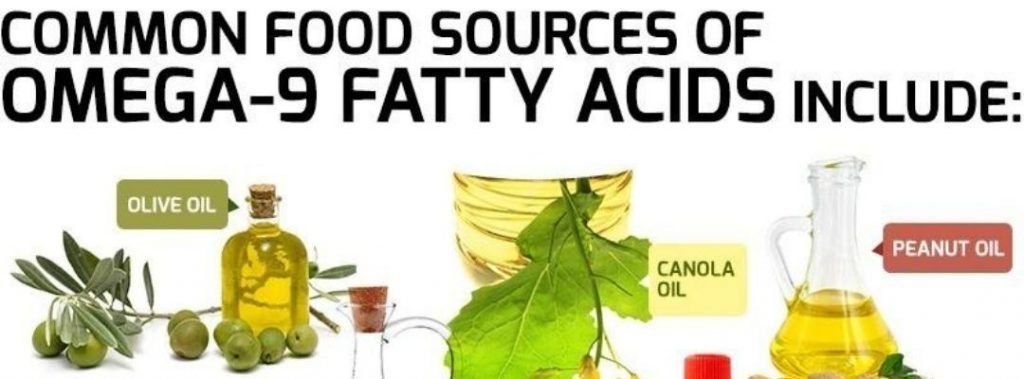You’ve heard of omega-3 and maybe even omega-6 fatty acids, but what is omega-9? More important, are you getting enough of this healthy fat in your diet?
When it comes to choosing healthy fats, confusion abounds. More than likely, you’ve heard of those miracle fatty acids, omega-3s. These essential fats reduce inflammation in the body and can help lower the risk of chronic degenerative conditions such as heart disease, diabetes, dementia, and even certain types of cancer. Along with omega-3s, omega-6 essential fatty acids such as GLA have also been shown to fight inflammation in the body and even help reverse obesity. But, what about omega 9?
Unlike omega-3 and omega-6 fatty acids, omega-9s are not considered “essential” fatty acids because our bodies can make them in small amounts. Omega-9s are utilized in the body when omega-3 and omega-6 fatty acids are not readily present.
What the Omega Numbers Mean
All fats are basically long chains connected like beads on a string that “bend” in different directions in relation to how the carbon, hydrogen, and oxygen are joined with molecular bonds. Unlike saturated fats (think butter), omega-3, 6, and 9 are polyunsaturated (PUFAs). The “saturation” refers to the number of hydrogen atoms that are attached to the carbon of these molecules—in other words, how many times the long chain is bent:
- Saturated: The chain is straight, with no double bonds; all of the molecules are “saturated” or “holding on” to each other with hydrogen atoms.
- Monounsaturated: The chain is bent once with one carbon connected by a double bond, and therefore, one of the hydrogens is missing.
- Polyunsaturated: The chain is bent two times or more, with two or more of the carbons connected by a double bond, and two or more of the hydrogens are missing.
- Omega-3s are polyunsaturated, and they have their double bond after the third position.
- Omega-6s fats are polyunsaturated, and they have their double bond after the sixth position.
- Omega-9s are either monosaturated or polyunsaturated, and they have their double bond after the ninth position.
The chemical structure of the omegas, however, isn’t nearly as important as what they actually do for your body once consumed.
Health Benefits of Omega-9s
The benefits of omega-9s are wide-ranging:
- Increases “good” HDL cholesterol levels and decreases “bad” LDL cholesterol levels. This helps eliminate plaque buildup in the arteries, which causes heart attacks and strokes.
- Reduces insulin resistance in people with diabetes.
- Increases energy and enhances mood.
- Improves memory performance in people with Alzheimer’s disease.
- Boosts the immune system.
Sources of Omega-9s
The two primary sources of omega-9 fatty acids are oleic acid and erucic acid. These can be found in foods and supplements. For example, oleic acid is the main component of olive oil, and erucic acid can be found in wallflower seed.

Other foods rich in omega 9 fatty acids include:
- Avocados and avocado oil
- Almonds and almond oil
- Pecans
- Cashews
- Hazelnuts
- Rapeseed
- Mustard seed
- Olives
- Macadamia nuts
Foods and Supplements That Offer Omega-9 Benefits
One or two tablespoons of extra virgin olive oil per day provides enough oleic acid for adults. However, this dosage should be divided up throughout the day. It is much more beneficial to the body to take olive oil like a time-released supplement rather than consuming the entire daily amount in a single dosage.
It is also important to note that the body will eventually suffer from having a large amount of omega-9s if there’s a lack of the proper amount of omega-3s. That is, you have to have the correct ratio of omega-3s, 6s, and 9s in your diet.

When taking omega-9 in supplement form, it is best to choose a supplement that also contains omega 3 fatty acids.

